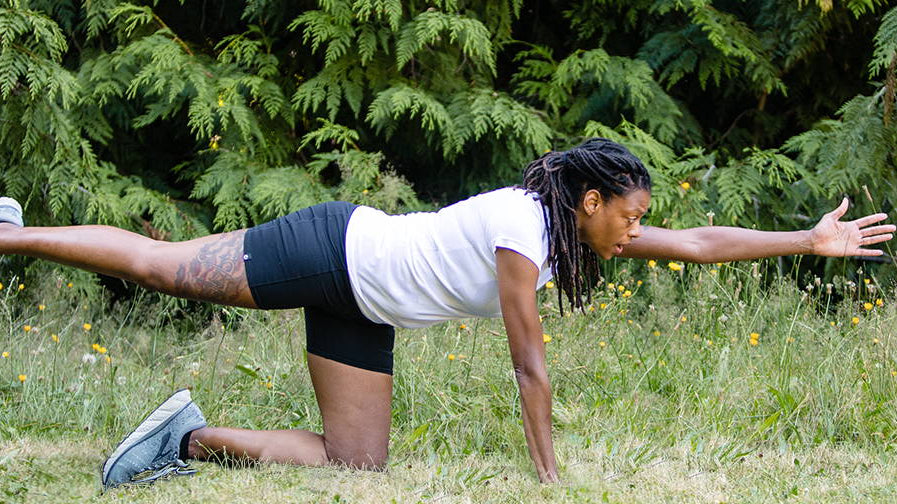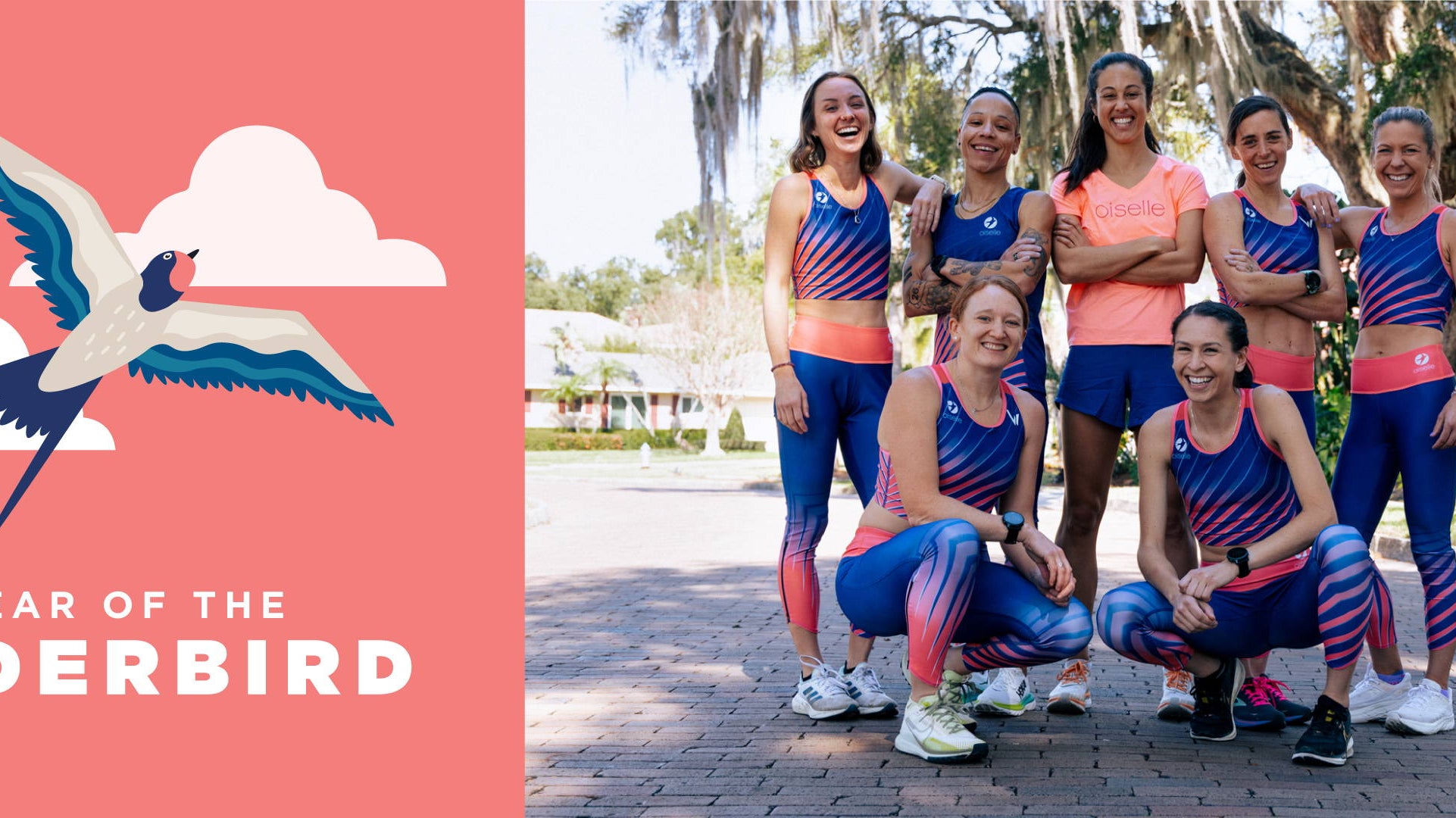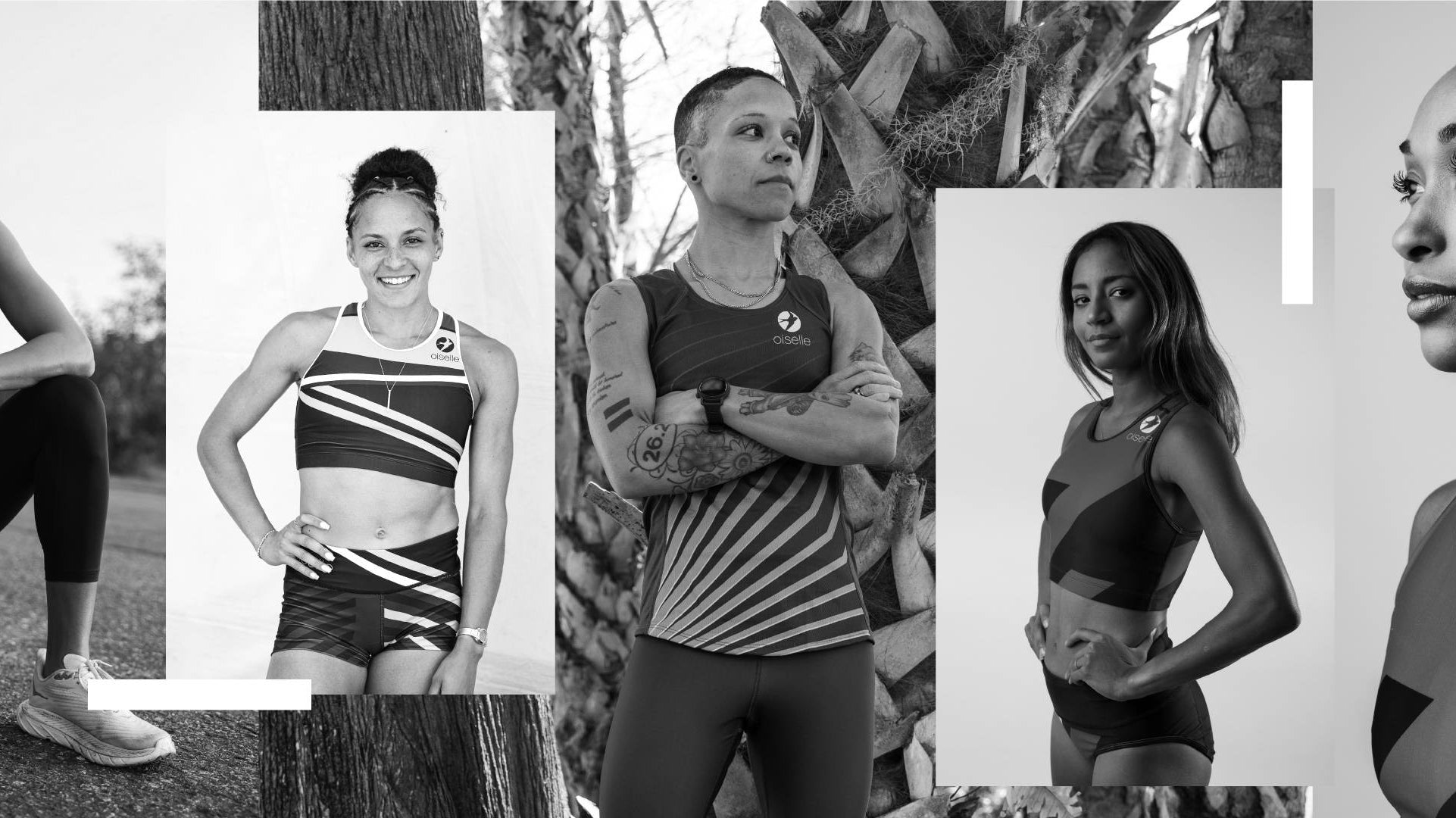Haute Volée pole vaulter, Megan Clark, like all athletes this year, has had to adjust her expectations and recalibrate where athletics fits in with pandemic life. Flexibility pays off. Not only did Megan get to compete this summer as she explains below, she will be jumping one more time this Saturday, August 29th at the famed Drake University track. Stay tuned to Oiselle's social channels for how to watch Megan finish out her season!
A few months ago, I thought this would be a normal year. I was coming off one of the best indoor seasons I’ve ever had, and it seemed like it would be a smooth transition to outdoor track, hopefully with much greater heights in sight. Then, the world practically stopped as we began to face this global pandemic. Reluctantly, I gave up hope that there would be an outdoor season at all. I went back to a different training style to invest in my long term strength and stability, increasing my strength to weight ratio and building a solid base to take me (hopefully) through 2021.
Then, my training partner built a runway and decided to put on an elite meet in her hometown. I realized that it could be my only chance to compete outdoors, so I got to work. I’ve been lucky enough to have access to a local backyard pole vault facility, so I started jumping from a short approach a couple of times a week, and did what I could to prepare.
When you train to run a marathon, there’s a training progression, and pole vault is no different. Before you step on a runway at a meet, you typically have several practice sessions under your belt from your competition approach. You have a plan for which poles to jump on, an idea of where to put the standards, and a general understanding of how you will feel on the runway. Coronavirus has changed that. I had only weeks and a short runway to work with.
I got to the meet, and immediately had to confront my discomfort. Generally, the biggest curveball during a pole vault competition is the wind, but the headwind was the least of my concerns. I stepped on the runway without being completely sure of my approach. I planted poles and jumped knowing that things were far from perfect. I showed up knowing that I would have to trust myself to make mistakes and fix them under pressure. And I survived. Actually, I did more than that. I nearly jumped as high as I did indoors. A year ago, I would have been paralyzed, or at least greatly hindered by fear and discomfort. I would not have been flexible enough to make changes and clear bars. As nuts as it sounds, I owe a good portion of that growth to coronavirus. Never before have I (or we) had to face the sort of challenges or changes that we have in the last several months. We’ve had to grow into more flexible, responsive, and adaptive people, which makes us better as humans, but also as athletes..
The privilege to compete, even among restricted audiences and into a disinfectant-covered pit, was an unbelievable blessing. It taught me to trust myself to make decisions and changes in a timely manner, but it also brought the competition field together in a way that I’ve never seen before. We shared coaches. We helped each other figure out where our steps should be. We shared snacks, bug spray, and sunscreen when meets ran long. We leaned on each other in rain delays. We hyped each other up and rallied for jumps when we could see the fatigue written on each others’ faces. We showed up for each other, and the end result was impressive performances, despite less than ideal conditions.
If competing during the pandemic has taught me anything, it’s to get comfortable being uncomfortable. Meets are filled with uncertainty, inconveniences, and long lists of precautions to mitigate risks. They’re also full of people learning to persevere, to trust themselves, to adapt to change, and to empower and support each other. This virus has brought great tragedy, but it has also given us the chance to learn about ourselves and to come together as a community— even if we stay six feet apart.










